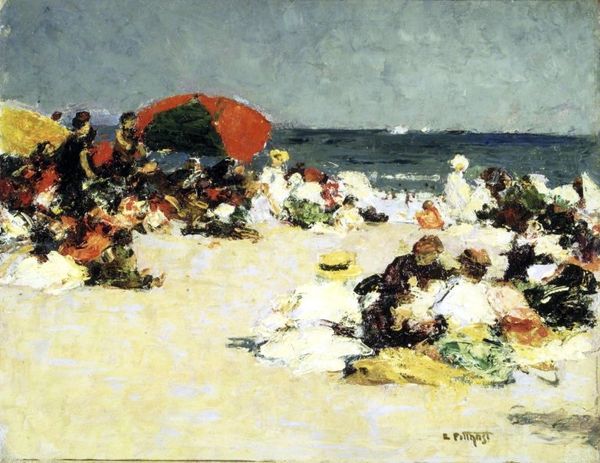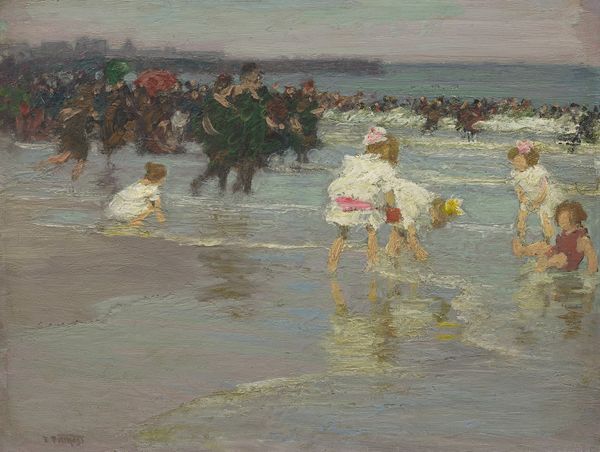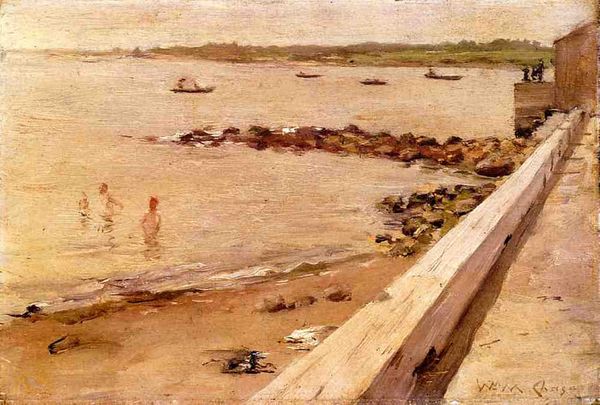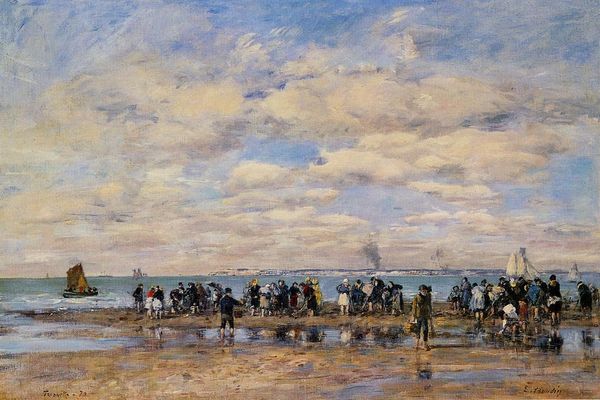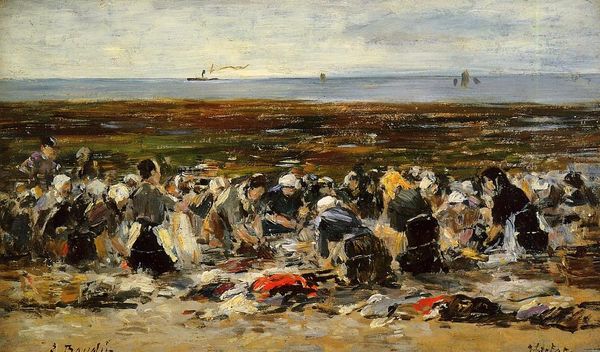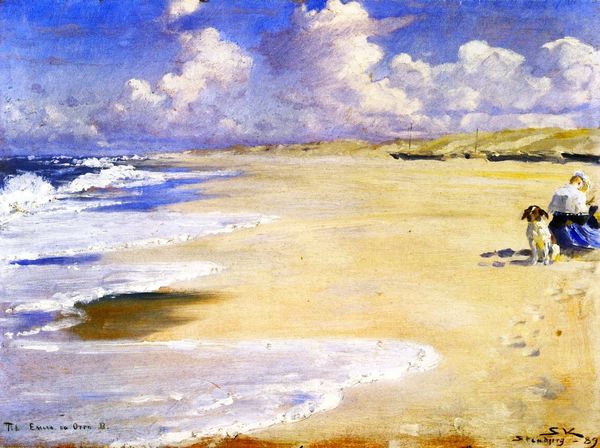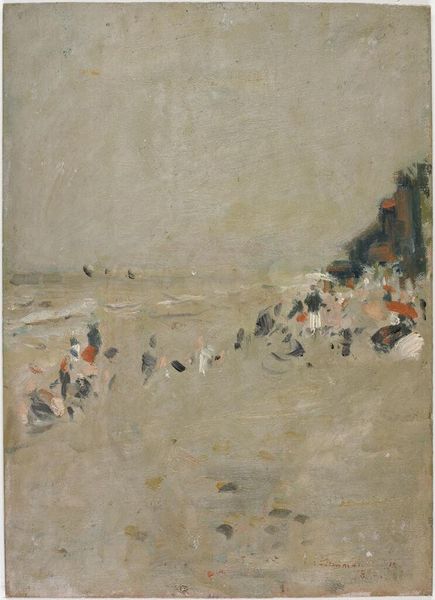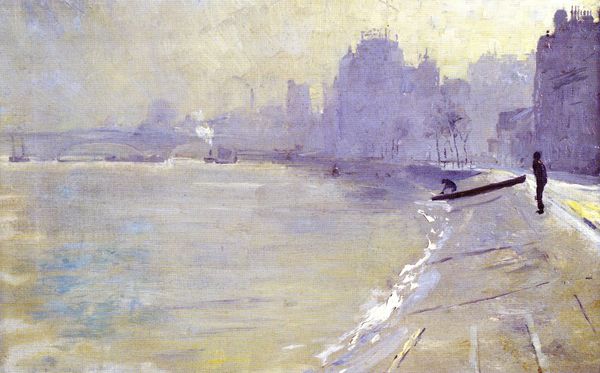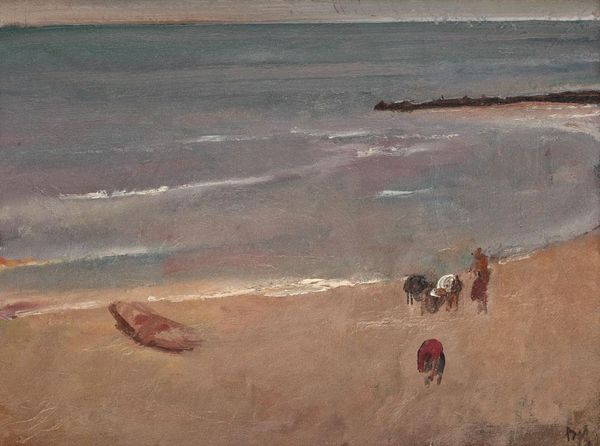
plein-air, oil-paint
#
impressionism
#
impressionist painting style
#
plein-air
#
oil-paint
#
landscape
#
impressionist landscape
#
figuration
#
oil painting
#
cityscape
#
genre-painting
Copyright: Public domain
Edward Henry Potthast captured this scene from Coney Island using oil on canvas. The loose, gestural brushstrokes suggest a scene of leisure and recreation. But let's think about the materiality of this artwork, and its making, beyond its immediate impression. Potthast would have used manufactured pigments bound with linseed oil, applied with brushes – all industrial products, reflecting the increasing availability of art supplies during the late 19th and early 20th centuries. This makes art more accessible, but also embeds it within networks of production and consumption. Coney Island itself, as a site of mass entertainment, is also a product of this era. The painting's quick, impressionistic style mirrors the fleeting nature of leisure time in an industrializing society. The ease with which the artist was able to create this painting belies the amount of labor that was poured into the making of the materials and the making of Coney Island as a destination. This artwork prompts us to reflect on the connections between art, leisure, and the broader social and economic forces at play.
Comments
No comments
Be the first to comment and join the conversation on the ultimate creative platform.


